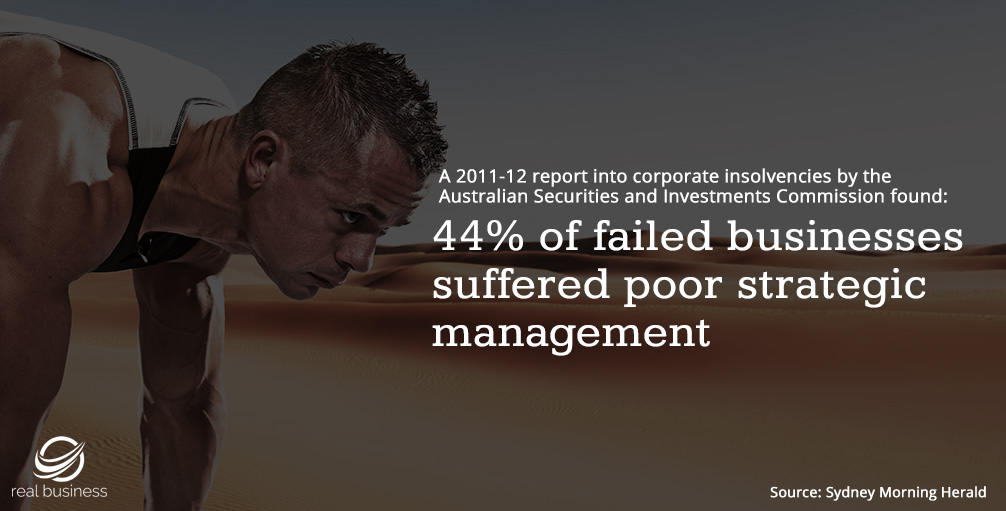Small business growth is a well-trodden journey with defined stages. Though the path ahead may seem daunting at the outset, you can take comfort in the fact that this is a road many people have travelled before – and that there’s a clear path towards long-term success there for you to learn from.
Arming yourself with an overview of the various points where you’ll experience fundamental change along the way gives you the best possible chance of making it to the finishing line. Let’s step through the six classic stages you can expect to navigate when it comes to growing your own business.
Here are 6 Stages of Small Business Growth:
1. Get a Business Action Plan in Place
The temptation when starting a new enterprise is to simply roll up your sleeves and get straight down to work tackling the seemingly infinite list of urgent to-dos staring you in the face. There’s certainly a lot of work to plow through at the outset, but make sure you start things off on the right foot by dedicating some time towards securing your foundations before taking on anything else.
What type of foundations are we talking about here? Put simply, for successful small business growth you want a clear action plan and outline of activity for your next twelve months of operation.
[bctt tweet=”For business success you want a clear plan and outline of activity for the next 12 months.” username=”RealBusinessGr”]
This should include a detailed budget, quarterly targets, and project plans for your main initiatives in areas such as marketing, advertising, and operations. You should also take the opportunity at this stage to make sure you have a clear, documented idea of what your core product or service offerings are, and who you’re primarily trying to target.
If you’re at the absolute beginning of your journey, some of the budgeting or goal details you come up with at this stage will be necessarily speculative, but it’s crucial that you go through the process of defining them regardless. It’s a key step that enforces clarity early on and, crucially, gives your business a defined structure to grow within and realistic yardsticks to measure yourself against.
Don’t skip this step if your business is already up and running either. If you haven’t already taken the time to get the right foundations in place, now is an excellent time to take stock of where you are and give yourself a stable base to build from.
The importance of getting these secure foundations in place cannot be overstated. The initial years of getting a business off the ground are, by their very nature, chaotic and unpredictable. You simply have to have some scaffolding in place in order to be able to withstand the early-stage rough and tumble that awaits you.
With the right foundations established, and some good old-fashioned hard graft and elbow grease along the way, it won’t be long before you hit the second classic stage of small business growth.
SEE ALSO: 4 Steps to Clarity When Performing Small Business Planning
2. Master Your Niche And Target The Right Audience
At this stage, your business is up and running and money is coming in the door. It may still be something of a scramble acquiring them, but paying customers are showing up and the cash register is regularly ringing.
With the initial struggle of attracting any sort of interest at all behind you, it’s now time to take ownership of your niche and start getting hyper-specific and organized on the marketing and sales front in order to really get the small business growth train charging down the track.
There are two broad areas you’ll find yourself tackling during this stage: operations and internal processes on the one hand, and sales and marketing on the other. On the internal side of the equation, this is the stage where you’re fine-tuning your overall offering and making sure you’re consistently knocking it out of the park for paying customers.
This is a classic crunch period where the importance of operational efficiency and reliable processes start to really become apparent to business owners. You’re likely still handling the bulk of day-to-day work yourself at this stage, and the importance of being able to delegate, automate and outsource is probably becoming painfully clear right about now. If you’re a one or two-person operation, there could be some sleepless nights in store!
On the marketing and sales part of the equation, this is the stage where you’re looking to really nail down your lead generation strategies and start optimizing every aspect of the customer buying cycle.
You’ll be looking to pull classic small business growth levers here by concentrating on getting more leads through the door, maximising your conversion rates, and boosting the value of the average sale. You’ll also be looking to put this type of marketing outreach on a trackable schedule with transparent reporting in place, and to take advantage of as much automation as possible along the way.
Even with efficient processes and excellent sales and marketing automation in place, there’s a practical limit to how much growth you can drive on your own. The subject of attracting and hiring the right sort of people to help your business grow is going to be very much on your mind and will be the focus of stage number three.
3. Attract, Train and Retain The Right People
Sooner or later, you’re going to simply have to take on staff and start building a significantly sized team if you want your business to truly grow. Let’s make no bones about it – this is a make or break step for many businesses.
[bctt tweet=”Hiring is one of the hardest things you’ll ever do and you need to get it right.” username=”RealBusinessGr”]
You need a crystal-clear idea of the roles you’re hiring for, a solid, repeatable recruiting process, and enough structure in place to help new hires learn quickly and hit the ground running.
The work doesn’t stop once you’ve taken new people on board either. All successful businesses have one key trait in common – the ability to retain their best staff.
Building a top-tier team is what assists in your small business growth and lets your business really take off, and you should be putting serious effort into keeping your top performers happy and making your business a truly great place to work at this stage.
As you gradually bring the right people on board during this time period, you’ll find less and less of your time being chewed up by day-to-day operational concerns as a business owner. With more mental head-room available, you’re free to start laying the groundwork for stage four of your business growth.
SEE ALSO: 5 Key Steps to Put Together a Winning Team
4. Use Leverage And Leadership
You’ll have gone through a fair share of blood, sweat and tears by the time you hit this stage of your entrepreneurial journey. The good news is that in this stage of small business growth a lot of the early heavy lifting we’ve already described starts really paying off. With more creative time on your hands as the owner, you’re able to start exploring the power of leverage across all aspects of your business.
This is where you start honing in on areas in which a one-time investment of upfront effort can pay off repeatedly down the line. You’ll be fanatically focusing on systematisation and carefully building out super-efficient processes and procedures that your entire team can use to reliably drive continued growth.
You’ll also be revisiting much of the initial sales and marketing work you did back in stage two with a view to ongoing optimisation, adding further automation where appropriate – and doubling down on what’s already working.
Though there’s a focus on process throughout this stage, you’re not tying your team’s hands with unnecessary red tape – quite the contrary. Part of the extra time you’ve freed up for yourself as a business owner will be invested in honing your own leadership skills; clarifying and expanding the vision of your business and getting your staff fired up about a shared future.
You’ll be setting the pace and driving results yourself throughout this stage of business growth, and it’s likely to be an enormously challenging and rewarding phase for you personally. The next level of growth can only be achieved by taking a huge chunk of that personal passion and drive and formally inculcating it in the values of the company that you’ve created.
5. Build A Culture That Can Deliver Results Without You
By this stage your business is truly cruising at altitude. You should be heading up an exceptional team who are working on a mature business that is reliably spinning off predictable profits and efficiently scaling to meet market demand.
Much of your focus in this period of growth will be on cementing the culture of the entity you’ve built. You’re building strong, collaborative, focused teams at all levels of your organisation who share your core values and can be trusted to execute perfectly – whether you’re there or not.
You’ll also find yourself putting considerable resources into identifying future leaders in your organisation around now, and making sure there’s a clear path to career growth for your best and brightest. You’re handpicking the next generation of leaders who will be capable of taking up the reins in your absence, and gradually delegating key areas of management responsibility as you do so.
By the time you reach this level of small business growth, you’ve given yourself a potentially much wider set of opportunities to explore. Making the most of them will be the subject of our final stage.
6. Reap the Rewards and Broaden Your Entrepreneurial Horizons
At stage six of the growth cycle you’re operating in relatively rarified territory. Starting from scratch, you’ve built a truly exceptional business that doesn’t require your involvement on a day-to-day level. You’ve also painstakingly constructed an incredibly valuable asset in its own right, and a powerful tool you can use to build ongoing sustainable wealth in all manner of creative ways.
By stepping outside of the business that’s merrily humming away in the background with the team you put in place, you’re free to step into a wider entrepreneurial world. Some people will look to parlay their profits into other investment vehicles, others may consider cashing out entirely and seek to put the business itself on the market. Some may choose to focus their efforts on joint ventures with other firms in order to further leverage the power of the asset they’ve built.
There’s a wealth of truly compelling opportunities out there that your hard-won business success gives you the freedom and flexibility to explore. You’re going to have a lot of fun picking between them if you get this far!
SEE ALSO: 5 Cornerstone Qualities On How To Be A Successful Entrepreneur
Growing a business through the six stages we’ve identified is one of the most incredible voyages you’ll ever set sail on – and easily one of the most rewarding. Each particular part of the journey brings its own set of challenges and opportunities, and you’ll find yourself constantly bumping up against the limits of your own skill-set and comfort levels along the way – as a fast-track learning process, this one is hard to beat!
A solid overview of the main stages ahead of you is a wonderful tool to keep you on track as you progress, but don’t overlook the option of getting specific external help and advice at each point along the way. At the Real Business Group, we have extensive experience of helping businesses master the operational details of each of the six stages we’ve outlined, and of helping business owners to elegantly transition between them. Our expert team are ready to help you put together a concrete plan of action for whatever stage of the business growth journey you happen to be currently at. Get in touch today and let’s take the next step together!








